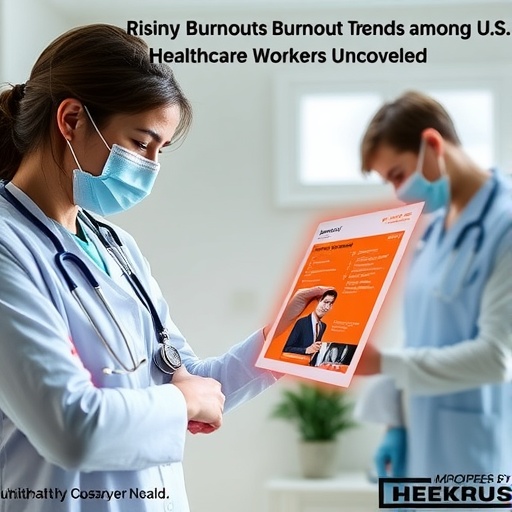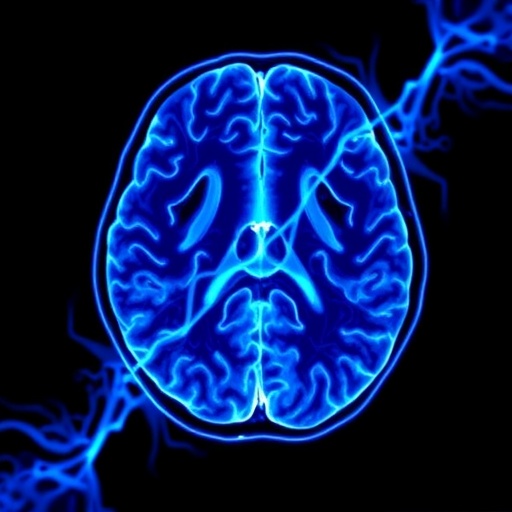
In the aftermath of the COVID-19 pandemic, the mental health landscape within healthcare settings has undergone significant transformation. A recent comprehensive survey conducted among Veterans Health Administration (VHA) healthcare workers sheds crucial light on changes in burnout and professional stress levels, revealing a complex interplay between pandemic stressors and institutional responses designed to mitigate their impact. While the data indicate a relative reduction in burnout and stress compared to peak pandemic phases, the persistence of elevated burnout levels compared with prepandemic baselines signals an ongoing occupational health crisis demanding innovative solutions.
Historically, burnout among healthcare professionals has constituted a major barrier to delivering optimal patient care, with symptoms such as emotional exhaustion, depersonalization, and a diminished sense of personal accomplishment collectively undermining workforce resilience. The pandemic exacerbated these factors dramatically, exposing healthcare workers to unprecedented workloads, moral injury, and psychological strain. The VHA’s longitudinal survey efforts provide a rare window into the temporal dynamics of these stress phenomena, elucidating how systemic interventions might influence mental health trajectories over time.
Analyzing the survey findings, researchers observed that, although average burnout and professional stress scores have decreased following the peak pandemic period, these measures remain substantially higher than those documented before the global health crisis. This persistence indicates that while the pandemic’s acute pressures may have somewhat abated, chronic stressors remain deeply embedded within the healthcare environment. Such chronicity perpetuates risks for impaired clinical performance, reduced job satisfaction, and attrition among healthcare workers, with downstream consequences for the veterans they serve.
Central to the VHA’s approach has been the deployment of multifaceted burnout reduction strategies, including enhanced mental health support services, workload adjustments, and efforts to bolster organizational culture. Preliminary evidence from the survey suggests these strategies show potential benefits, manifesting in measurable declines in reported stress and burnout indicators. However, the magnitude of these improvements remains insufficient to restore healthcare worker well-being to prepandemic levels, highlighting limitations of current interventions and the need for ongoing refinement.
The complexity of burnout within healthcare settings is underscored by its multifactorial etiology. Professional stress arises not only from workload but also from systemic issues such as resource scarcity, hierarchical constraints, and role ambiguity. The pandemic further complicated these factors by imposing novel stressors like fluctuating clinical protocols, personal risk of viral exposure, and ethical dilemmas associated with rationed care. Effective mitigation, therefore, demands comprehensive strategies that address these intersecting dimensions rather than isolated symptoms.
Neuroscientific perspectives illuminate the profound effects of sustained stress on healthcare workers’ cognitive and emotional functioning. Chronic activation of the hypothalamic-pituitary-adrenal (HPA) axis under stress conditions can lead to dysregulation of cortisol secretion, impairing attention, memory consolidation, and emotional regulation. Such neurobiological alterations compromise clinical decision-making and interpersonal interactions, emphasizing the urgency of implementing interventions that alleviate these biological stress impacts.
Furthermore, the survey highlights the critical role of institutional support in buffering burnout. Organizational factors such as leadership engagement, transparent communication, and recognition practices substantially modulate healthcare workers’ perceptions of professional stress. The VHA’s initiatives in these domains appear to correlate with favorable trends in worker well-being metrics, suggesting that structural investments in organizational culture may yield significant dividends in occupational health.
Despite these promising findings, the persistent elevation of burnout underscores the pandemic’s enduring legacy on healthcare worker mental health. The data advocate for sustained monitoring and adaptive response systems capable of responding to evolving stressors. For example, implementing real-time digital monitoring tools and personalized resilience-building programs could enable early identification and targeted intervention for at-risk individuals.
Moreover, the complexities of viral pandemics necessitate integrating psychological preparedness into routine healthcare training and operational protocols. Embedding resilience frameworks and stress inoculation methods may fortify healthcare workers against future crises, thereby promoting sustainable professional engagement and retention.
At the policy level, these insights advocate for prioritizing healthcare workforce mental health in resource allocation and system design. Recognizing burnout as a systemic occupational hazard, rather than individual weakness, mandates structural reforms including manageable staffing ratios, flexible scheduling, and accessible mental health resources integrated within clinical settings.
The VHA survey study also invites comparison with broader healthcare systems globally, where similar patterns of pandemic-induced burnout have emerged. Cross-institutional collaboration and shared best practices could expedite the development of effective, scalable burnout reduction strategies, enhancing healthcare system resilience worldwide.
In conclusion, this pivotal study elucidates the nuanced trajectory of burnout and professional stress among Veterans Health Administration healthcare workers in the wake of the COVID-19 pandemic. While institutional efforts have yielded encouraging but incomplete improvements, the persistent elevation of burnout levels signals a critical need for innovative, systemic, and sustained strategies. Addressing this challenge is essential not only for healthcare worker well-being but for safeguarding the quality and safety of patient care in a post-pandemic world.
Subject of Research: Burnout and professional stress among Veterans Health Administration healthcare workers post COVID-19 pandemic.
Article Title: Not provided.
News Publication Date: Not provided.
Web References: Not provided.
References: (doi:10.1001/jamanetworkopen.2025.5954)
Image Credits: Not provided.
Keywords: Health care, Stressors, COVID 19
Tags: burnout trends among healthcare workersemotional exhaustion in medical professionalshealthcare worker well-being and patient carelongitudinal studies on burnoutmental health impact of COVID-19 on healthcaremoral injury in healthcare settingsoccupational health crisis in healthcarepandemic effects on healthcare professionalsresilience strategies for healthcare workersstress levels in healthcare workforcesystemic interventions for burnout reductionVeterans Health Administration survey results





